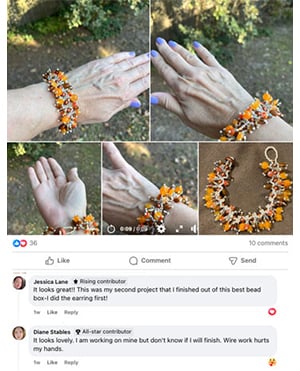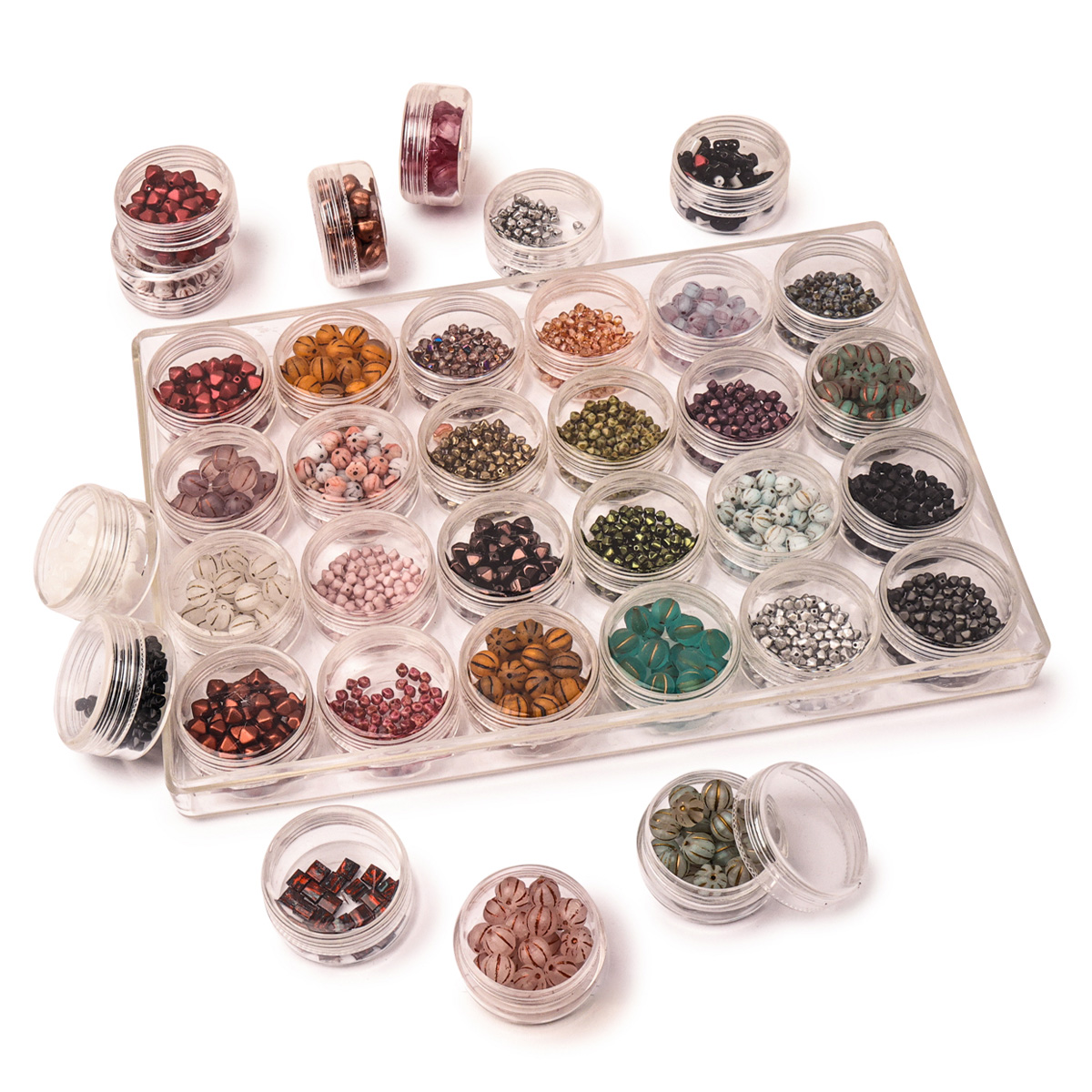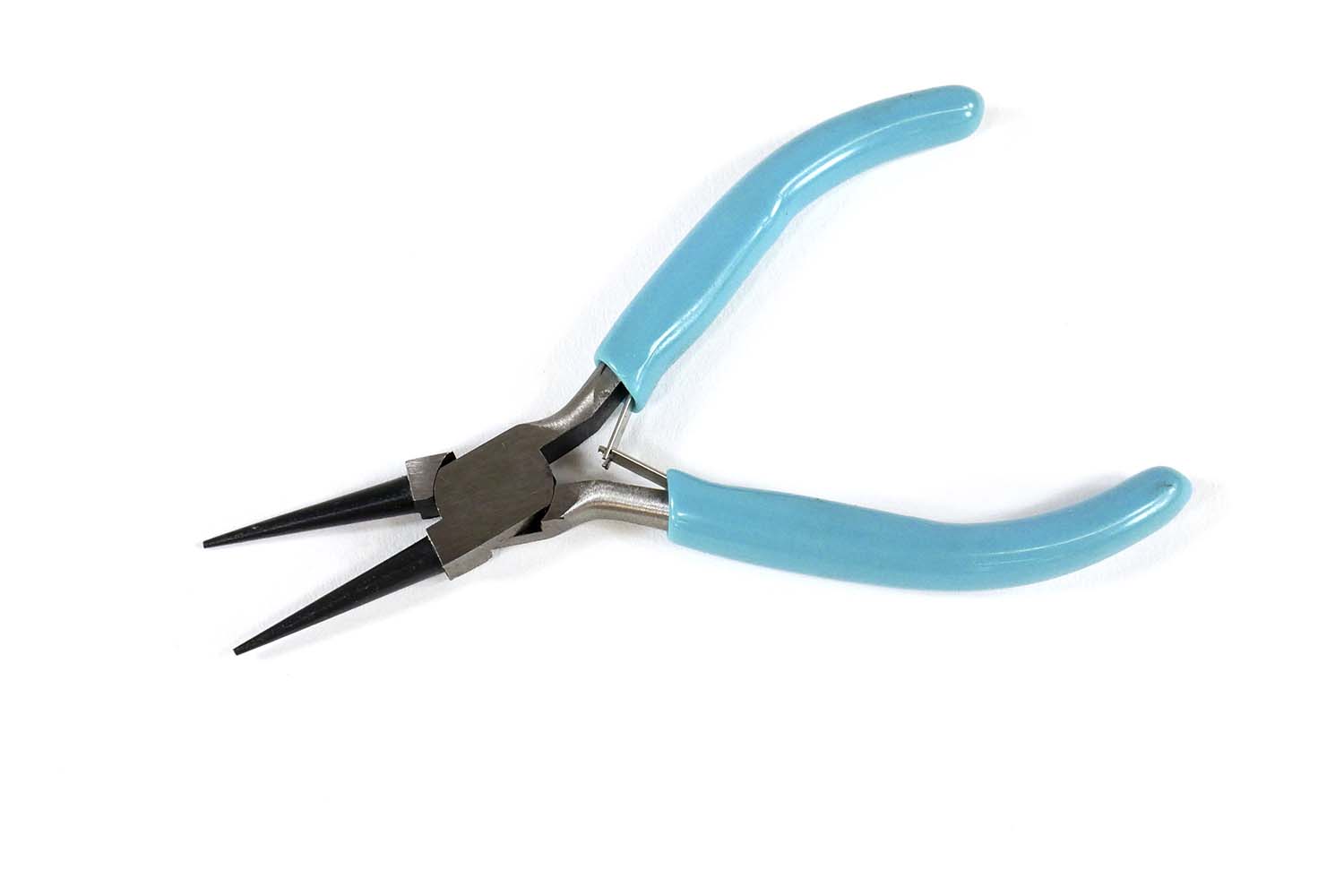- Jewelry-Making Supplies ▾
Design Jewelry with Confidence!
Seed Beads
Thread, Wire, & Stringing Materials
Findings & Components
Everything Else
- Kits & Collections ▾
Assemble Your World
Kits & Collections
- Subscriptions ▾
Want monthly Beading Happiness?
Subscriptions
- Learn to Make ▾
Want to learn more?
- Discounts & Deals ▾
Explore Today's Promotions!
-
Seed Beads
Thread, Wire, & Stringing Materials
Findings & Components
Everything Else
-
Kits & Collections
-
Subscriptions
- Home
- How to Make Jewelry
- Projects By Bead Type
- Crimp Bead Projects
- Multi Strand Tube Bracelet Tutorial
Multi Strand Tube Bracelet Tutorial
Step 1: Choose Your Materials
Step 1: Choose Your Materials
-
- Claspgarten Flower Box Push Clasp with center Swarovski Crystal | 13mm | 2-Strand | Real Rhodium Plated (Silver)
-
-
-
-
-
-
Step 2: Watch the
Video Tutorial
Step 2: Watch the
Video Tutorial
Step 3: Need More Help? Follow these Steps
Step 3: Need More Help? Follow these Steps

Quick Project Steps
Quick Project Steps
Begin by attaching the beading wire to the clasp using a crimp tube.
String the curved tube beads, gemstone beads, and smooth round beads onto the beading wire in your desired pattern. Ensure the curved tube beads are spaced evenly and vary the starting points of the tubes on each strand to create an interesting visual effect.
Crimp the wire to the opposite side of the clasp to secure the beads.
Repeat the process for additional strands, varying the design to create a multi-strand effect.
Finalize the design, adjust for fit, and trim any excess wire.
Step 4: Pick Your Own Colors
Step 4: Pick Your Own Colors
Step 5: Need Any Extra Materials?
Step 5: Need Any Extra Materials?
-
-
- Athenacast Wire Guard Protectors - 4.5x4mm Premium RealSilver Plated Stainless Steel | Pack of 100
-
-
Step 5: Need Any Extra Materials?
Step 5: Need Any Extra Materials?
Step 6: Choose Your Next Project
Step 6: Choose Your Next Project
- Bring your Czech glass beads to life with this necklace of dancing and floating flashes of color. All you need is stainless steel beading wire, crimp tubes, a clasp, and any collection of Czech glass beads to make this on beat necklace. Technique learned:CrimpingBasic BeadingBring your Czech glass beads to life with this necklace of dancing and floating flashes of color. All you need is stainless steel beading wire, crimp tubes, a clasp, and any collection of Czech glass beads to make this on beat necklace. Technique learned:
- Crimping
- Basic Beading
Step 6: Choose Your Next Project
Step 6: Choose Your Next Project
- Glasgow Rose Embroidered Pendant - DIY Jewelry Making Tutorial by PotomacBeads
- Glasgow Rose Embroidered Pendant - DIY Jewelry Making Tutorial by PotomacBeads
- Comet Earrings - DIY Jewelry Making Tutorial by PotomacBeads
- Flower Gem Earrings - DIY Jewelry Making Tutorial by PotomacBeads
- Embroidered Rings - DIY Jewelry Making Tutorial by PotomacBeads
Join Our Growing Community
Join Our Growing Community




Our Testimonials
Our Testimonials
Only Visible on Admin Mode
Item Description
Designer's Material List
Project Steps
Begin by attaching the beading wire to the clasp using a crimp tube.
String the curved tube beads, gemstone beads, and smooth round beads onto the beading wire in your desired pattern. Ensure the curved tube beads are spaced evenly and vary the starting points of the tubes on each strand to create an interesting visual effect.
Crimp the wire to the opposite side of the clasp to secure the beads.
Repeat the process for additional strands, varying the design to create a multi-strand effect.
Finalize the design, adjust for fit, and trim any excess wire.
Highest Quality
Products
100% Money
Back Guarantee
Fast
Shipping
Best Teaching &
Customer Service
You'll want these emails...
Get Free Projects & Inspiration
Get Free Projects & Inspiration
- Bullet 1
- Bullet 2
- Bullet 3
Copyright © PotomacBeads




















